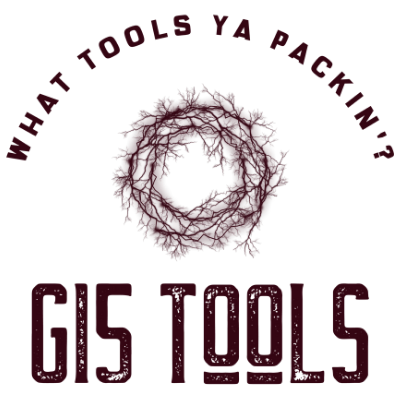With businesses and people adopting multifaceted digital and cloud-based tools, the need for specific security practices is as important as ever. One of the most important focus areas of ensuring cloud-based environments are both secure and well-configured is Cloud Security Posture Management (CSPM).
The global average cost of a data breach, as per the IBM report of 2025, is estimated to be around $4.62 million, with a considerable amount being attributed to breaches in the cloud. The risks of cloud misconfigurations are very high in the current scenario as technology enthusiasts and experienced industry professionals begin to utilize cloud platforms for devices such as storage, collaboration, and device management.
The goal is to demystify a cloud security management concept that is very important, specifically for physically and digitally tool-prescribing users. With regard to seamlessly managing a smart tool cloud ecosystem, construction digital workflows, or even tech industry automation, the article describes where cspm and its functions lie, while also explaining its critical functions to be kept in mind.
What Cloud Security Posture Management Means
Cloud Security Posture Management is a category of automated tools created to discover and address the vulnerabilities associated with the configuration of cloud-based infrastructure. As with CSPM, cloud environments are scanned for configuration errors which pose a risk of exposing systems to breaches, unauthorized access, or even data loss.
While traditional security systems concentrate their efforts on a user’s device or endpoint, CSPM looks at the configuration and activities of cloud accounts and services. CSPM looks for bad configurational practices such as permission errors, data storage without adequate security controls, as well as unrestricted access to data or services from outside the cloud.
IoT users, as well as those with firmware updates and data storage in the cloud, have to be concerned with the risks which arise from poorly set cloud boundaries. Other users may be denied access to sensitive data, while third parties may be allowed to interfere with the system’s functioning. CSPM tools manage to solve these problems through constant surveillance, which alerts users to emerging security concerns without manual intervention.
How CSPM Enhances Digital Safety
Misconfigurations, rather than software bugs or targeted attacks, are the culprits of cloud security breaches at a staggering 70 per cent rate. Due to this, CSPM developed automated compliance checks against security policies set within the cloud ecosystem to ensure mitigations take place, preventing software bugs and attacks. CSPM offers to automate the monitoring of the cloud environment’s security for compliance violations.
CSPM solutions check the existing configuration against the established benchmarks, be it CIS Benchmarks, ISO 27001 or others. CSPM can alert the user when an internal-only storage bucket is set to public or recommend to fix the issue be fixed. In other words, if there is an unprotected API endpoint posed by an IoT monitoring dashboard used on a construction site, CSPM can notify the user of such configuration errors and prompt corrective actions.
Since CSPM is designed to enforce security policies, it helps reinforce security in scenarios where oversight or partial automation may occur, for example, with cloud resource scrutiny. In these scenarios, CSPM can close gaps that cloud infrastructure security reviews might leave, and strengthen overall security.
 Key Features to Look for in a CSPM Solution
Key Features to Look for in a CSPM Solution
As with any software solution, CSPM tools have their differences. These differences usually stem from CSPM functions and capabilities. Every business has its unique requirements and objectives, meaning that the chosen CSPM solution needs to have certain important elements. A solid CSPM solution provides:
Assurance of continuous compliance
Policies and standards are checked automatically at regular intervals instead of just once, ensuring that all configurations align with the required policies.
Alerts and active visual dashboards
Displays errors as visual elements, issues alerts, and notifications, allowing for all configurations to be rectified before critical thresholds are crossed.
Support of multiple cloud computing environments
Users integrating AWS with Microsoft Azure and Google Cloud benefit more from CSPMs that have cross-platform scanning capabilities, as these tools provide better insights into the organization’s system health.
Access to tools of DevOps
With CSPM enabled as a native tool of security, developers and engineers using CI/CD pipelines can perform their duties seamlessly.
These capabilities are great for engineers or IT professionals with cross-cloud software and hardware controls. A good illustration is an engineer performing remote tool diagnostics and using a CSPM dashboard to ensure that the cloud logs are encrypted and restricted for access as necessary.
Why CSPM Matters for Tech Professionals and DIYers
The risks related to misconfiguration of a cloud system are often associated with a business of a certain size. However, for users of a smaller scale, especially freelancers or DIY enthusiasts, the risks are equally relevant. Most of these users implement cloud storage or remote access features with little or no dedicated security team for configuration oversight.
Think of a do-it-yourself home automator who sets up a home automation system, using cloud services to automate and remotely access features and saves configuration files. Without CSPM, such users may be oblivious to the fact that these files are stored in the cloud and are publicly accessible.
Professionals in electrical engineering, CNC machining or similar other disciplines often face the danger of intellectual property theft and safety risks from unauthorized device setting alterations.
CSPM enhances visibility in these settings and offers a more practical solution to the problem of controlling and maintaining digital assets. As more cloud-based services are integrated, the relevance of CSPM is growing. Examples of such services are remote firmware update capabilities in smart drills and data synchronization in construction project management software.






